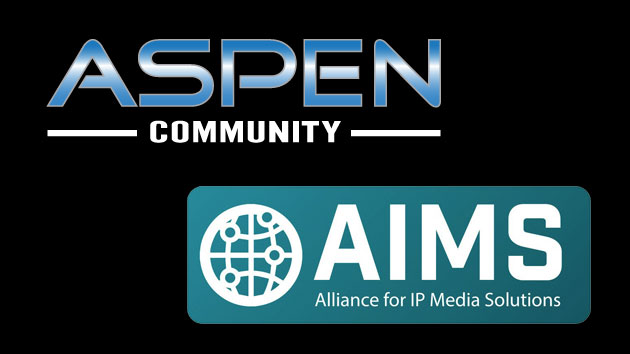At NAB last year, Evertz proposed a new transport format for sending uncompressed video over IP networks. It was called ASPEN, an acronym for Adaptive Sample Picture Encapsulation. Evertz rallied industry leaders behind the idea. By September, a small army of companies including Abekas, ChyronHego, Hitachi, Ross, Sony, Tektronix and Vizrt had aligned behind ASPEN just in time for IBC. A group effort called the ASPEN Community was formalized shortly thereafter, with Evertz in the lead.
But, as is so often the case when new formats are proposed, there was pushback. In December, a different group of vendors including Grass Valley, Imagine Communications, Lawo and Snell Advanced Media formed a trade association called the Alliance for IP Media Solutions, or AIMS. The group's stated aim was to adapt, standardize, develop and refine open protocols for media over IP.
Both organizations were dedicated to helping the industry by focusing support on a single, workable solution, but not the same solution. Both proposals use mezzanine compression methods to reduce bandwidth, but not the same mezzanine compression methods. And both groups refer to SMPTE documents, but — you guessed it — not the same SMPTE documents. Call it a disagreement among colleagues or a rivalry between competitors, but the end result is conflict.
Well, maybe "conflict" is too strong a word. But there's disagreement. And that breeds uncertainty.
Some companies have chosen sides. Just to name some of the most prominent supporters, Evertz, Ross, For-A, Sony and Time Warner Cable Sports are stalwarts on team ASPEN, while Grass Valley, Avid, Snell, Panasonic and CBS are on the roster for team AIMS. Meanwhile, other vendors are hedging their bets — companies including AJA, Matrox, and Tektronix have joined both groups.
The ins and outs of both proposals could fuel a spirited super-session at the likes of a SMPTE conference or HPA tech retreat, but we just wanted to get a sense for how the two camps saw themselves and their proposals in relation to each other and the rest of the industry. So we sent a very similar set of questions to leaders from each of the two groups — Evertz Director of Product Marketing Mo Goyal and Grass Valley SVP of Strategic Marketing Mike Cronk, chairman of the AIMS board — in hopes of bringing clarity to the discussion. Click the links below to read the Q&As, including suggestions on what you can do if you want to learn more or otherwise get involved with either group at NAB.
Q&A: Evertz Director of Product Marketing Mo Goyal on the ASPEN Protocol
Did you enjoy this article? Sign up to receive the StudioDaily Fix eletter containing the latest stories, including news, videos, interviews, reviews and more.











Just to be clear, AIMS promotes the open standards that SMPTE has and is ratifying for Standards. These protocols so not (by themself) utilize any mezzanine compression.
As well as, the AIMS Alliancell, a non-profit, has 25+members since it’s inception at the end of Decmeber.
It should also be noted, that some of the vendors in the ASPEN Community have also publicly demonstrated the protocols endorsed by the AIMS alliance, and are in progress to becoming standard in SMPTE (namely TR-03).
Further clarification:
ASPEN (SMPTE RDD37) does not use mezzanine compression. It defines uncompressed UHD (4K/8K), 3G, HD, and SD over IEC 13818-1 (or ITU-T Rec. H.222.0) standards (known as MPEG-2 transport stream).
There are large number of global installations currently using the ASPEN format today.